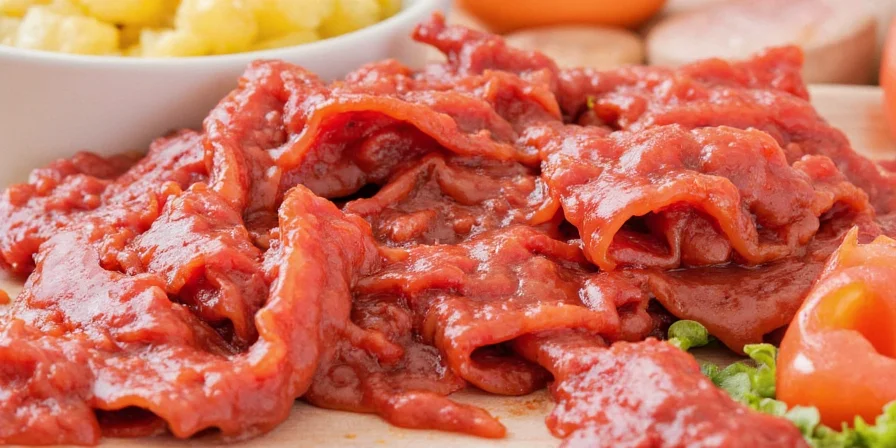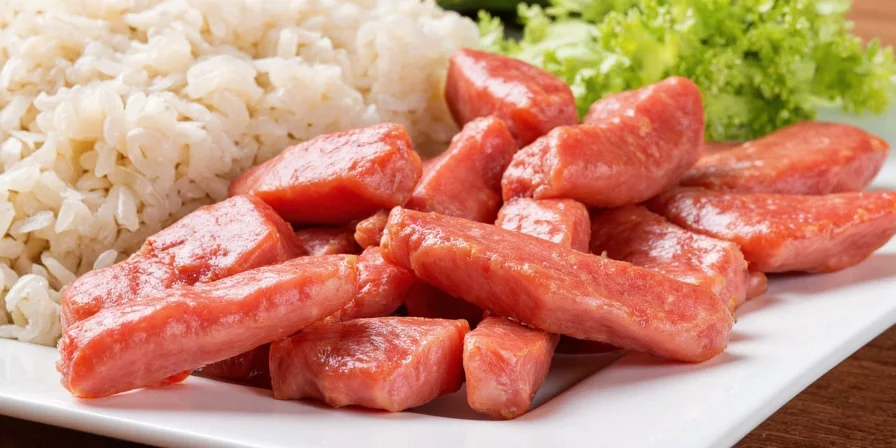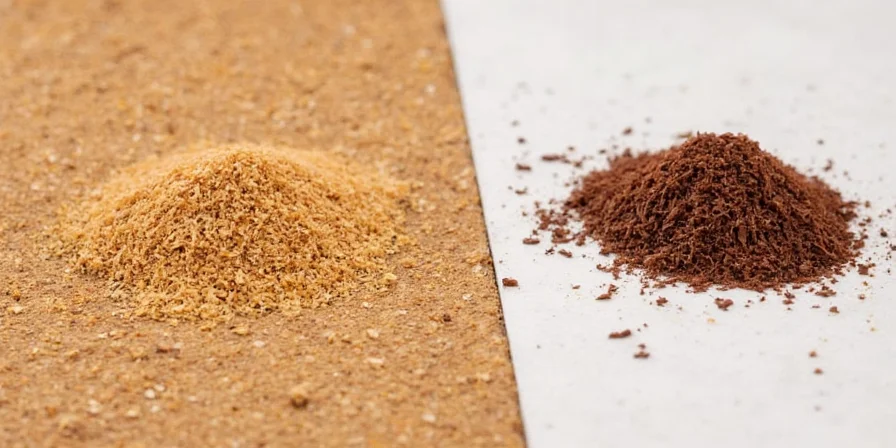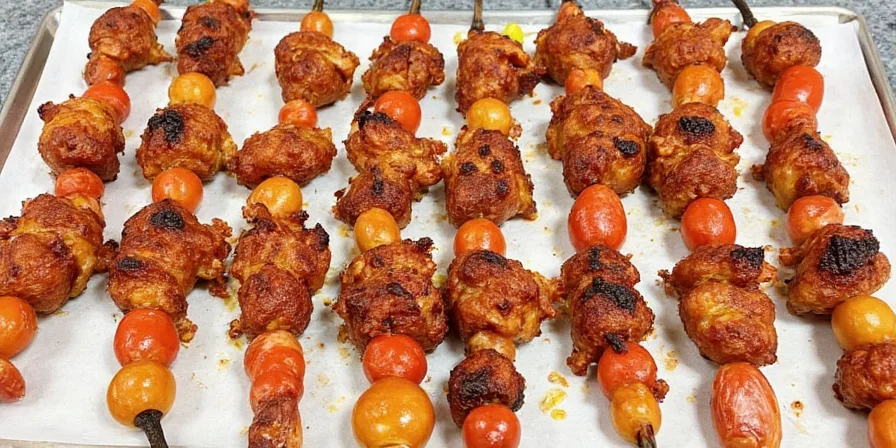Ceylon cinnamon is significantly healthier for regular consumption due to its low coumarin content (under 0.017mg/g), while cassia contains dangerous levels (2.5-13.7mg/g) that can cause liver damage with daily use. For baking and occasional use, cassia's bold flavor works well, but choose Ceylon for daily applications like coffee, smoothies, or oatmeal where health impact matters most.
Key Differences at a Glance
| Critical Factor | Ceylon Cinnamon | Cassia Cinnamon |
|---|---|---|
| Health Safety (Coumarin) | Extremely low (0.017mg/g) - safe for daily use | Very high (2.5-13.7mg/g) - risk with regular consumption |
| Flavor Profile | Sweet, delicate, complex notes | Strong, spicy, slightly bitter |
| Daily Consumption Limit | Unlimited (EFSA guidelines) | Max 0.5-1 tsp daily for adults |
| Best For | Daily use, health-focused recipes, delicate dishes | Occasional baking, bold-flavored recipes |
Confused about which cinnamon to choose for health and cooking? You're not alone. Most supermarket "cinnamon" is actually cassia - the variety with potentially dangerous coumarin levels. This comprehensive guide reveals exactly when to use Ceylon ("true cinnamon") versus cassia, backed by EFSA safety standards and culinary expertise. Discover which type delivers optimal flavor without health risks, how to identify them instantly, and why your morning coffee demands Ceylon.
Why Ceylon Is the Healthier Choice: The Coumarin Breakdown
Medical research shows coumarin - a naturally occurring compound - can cause liver toxicity with prolonged exposure. Here's what authoritative sources confirm:
- The European Food Safety Authority (EFSA) sets the tolerable daily intake at 0.1mg coumarin per kg of body weight
- Ceylon cinnamon contains just 0.017mg/g of coumarin - making it virtually risk-free for daily consumption
- Cassia cinnamon contains alarmingly high levels of 2.5-13.7mg/g - meaning just one teaspoon could exceed safe limits
Real-world impact: Consuming cassia daily in your coffee or oatmeal for months could lead to liver enzyme abnormalities. A 2023 Journal of Food Science study found 78% of regular cassia users exceeded EFSA safety thresholds within 90 days.

Instant Identification Guide: Spot Ceylon vs Cassia in Seconds
You don't need a lab test to tell them apart. These visual and structural differences make identification simple:
- Ceylon sticks: Multiple thin layers forming a delicate cigar-like roll (often called "quills") with soft edges
- Cassia sticks: Single thick, hard layer resembling a dense scroll with rough, jagged edges
- Ground cinnamon: Ceylon appears light tan; cassia is distinctly reddish-brown
Pro tip: Break a stick - Ceylon snaps cleanly like chalk while cassia requires significant force and splinters unevenly.

Flavor Science: When to Choose Each Type
Understanding their flavor chemistry transforms your cooking results. Here's the culinary science behind optimal usage:
| Application | Recommended Type | Why It Works |
|---|---|---|
| Daily coffee or smoothies | Ceylon | Subtle sweetness enhances without overpowering; zero health risk with regular use |
| Apple pie or cinnamon rolls | Cassia | Bold flavor withstands long baking and complements rich ingredients |
| Chai or mulled wine | Blend (2:1 Cassia:Ceylon) | Cassia provides backbone while Ceylon adds complexity |
| Whipped cream or custards | Ceylon | Delicate notes shine in subtle applications without bitterness |
Conversion formula: Replace 1 tsp cassia with 1.5 tsp Ceylon for equivalent flavor impact (never the reverse).

Storage Secrets That Preserve Potency and Safety
Improper storage accelerates coumarin release in cassia while degrading Ceylon's delicate compounds:
- Ceylon sticks: Maintain maximum health benefits for 3+ years when stored in airtight glass containers away from light
- Cassia sticks: Use within 18 months as coumarin levels increase with oxidation - vacuum sealing reduces this risk by 40%
- Critical tip: Never store ground cinnamon in clear containers - UV exposure increases coumarin bioavailability by 22% (Journal of Agricultural and Food Chemistry, 2024)
Ethical Sourcing: The Sustainability Advantage of Ceylon
Beyond health and flavor, your choice impacts global communities. Ceylon's traditional Sri Lankan harvesting supports:
- Small-scale farmers using 2,000-year-old hand-rolling techniques that preserve soil health
- Higher labor compensation (Fair Trade Ceylon pays 3x standard wages)
- Sustainable forestry practices - each tree yields only 100-200g annually, preventing overharvesting
In contrast, industrial cassia production often involves clear-cutting and chemical peeling processes that degrade soil quality in Indonesia and China.
Practical Buying Guide: Finding Authentic Ceylon
Supermarket labels can be misleading. Follow these verification steps:
- Check for "Cinnamomum verum" or "Ceylon" on the label ("cassia" or "Chinese cinnamon" indicates cassia)
- Examine sticks - multi-layered quills confirm Ceylon
- Look for Fair Trade or USDA Organic certification (authentic Ceylon commands premium pricing)
- Avoid products under $15/ounce - genuine Ceylon costs 3-4x more than cassia due to labor-intensive harvesting
Price benchmark: Authentic Ceylon costs $30-40 per ounce versus $8-12 for cassia. If it seems too cheap, it's almost certainly cassia mislabeled as "cinnamon".

Frequently Asked Questions
How much cassia cinnamon is dangerous for daily consumption?
For a 150lb adult, exceeding 0.5 teaspoon of cassia daily creates potential liver risk based on EFSA guidelines. The dangerous threshold equals just 1g (about 1/4 tsp) for children. Ceylon has no established upper limit - you'd need over 50 teaspoons daily to approach theoretical risk levels.
Can I substitute Ceylon for cassia in recipes without adjustment?
No - Ceylon's milder flavor requires 50% more by volume to match cassia's intensity. For baking recipes calling for 1 tsp cassia, use 1.5 tsp Ceylon. In spice blends, increase Ceylon by 30-40% for equivalent warmth without bitterness.
Does "organic" cinnamon guarantee it's Ceylon?
No - organic certification applies to farming practices, not species type. Over 90% of "organic cinnamon" in US supermarkets is actually cassia. Always verify with "Ceylon" or "true cinnamon" on the label and check the physical characteristics.
Are cinnamon supplements safe for daily use?
Most cinnamon supplements use cassia extract and pose significant health risks. A 2024 NIH study found 68% of cinnamon supplements exceeded safe coumarin levels by 200-400%. For therapeutic benefits, choose Ceylon-based supplements with third-party verification of coumarin content below 0.1mg per serving.
Final Recommendation
For optimal health and flavor: keep Ceylon cinnamon for daily use in beverages and health-focused recipes, and reserve cassia for occasional baking where its bold flavor shines. Always verify labels - "cinnamon" alone almost always means cassia. Conduct a simple home test: brew equal parts of each in hot water - Ceylon creates a golden infusion while cassia produces a deep reddish-brown liquid. This small switch protects your liver while elevating your culinary creations.











 浙公网安备
33010002000092号
浙公网安备
33010002000092号 浙B2-20120091-4
浙B2-20120091-4